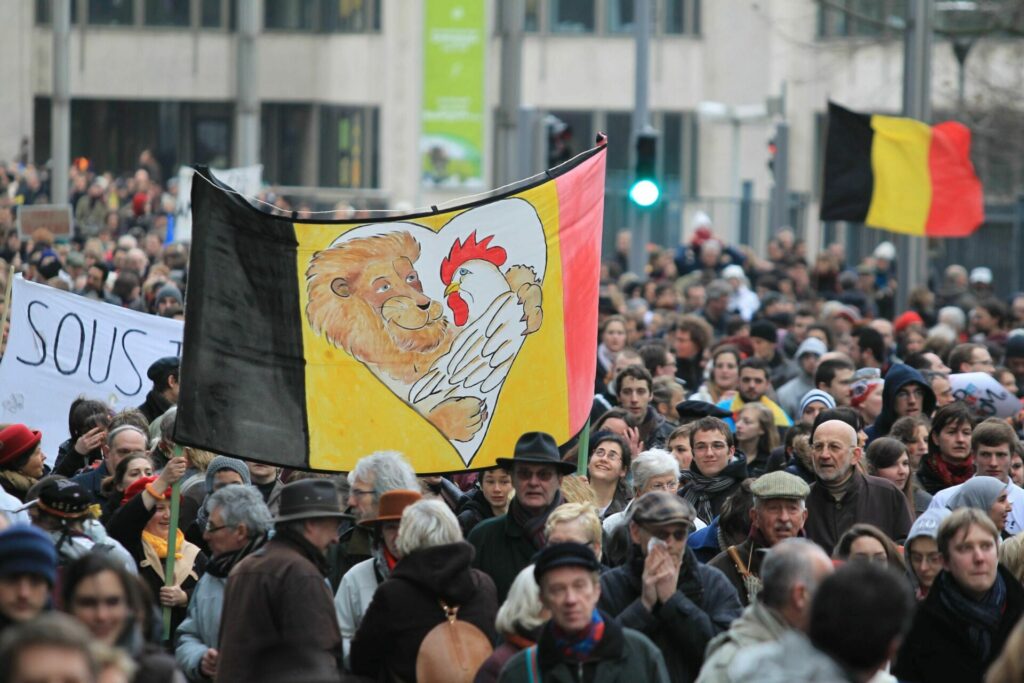Belgium's population rose to 11,763,650 (up by 66,093) on 1 January 2024, primarily thanks to immigration offsetting the country's declining natural population, according to Belgium's statistics office Statbel.
The increase of 0.57% was driven by an influx of 66,349 immigrants – counterbalancing a slight decline in Belgium's natural population of around 1,000 people. This decrease is becoming "typical" for the country, as the number of deaths is beginning to exceed the number of births.
"The natural balance – which is the difference between the number of births and deaths – was negative again in 2023 (-1,057). It has been on a downward trend for several years, so a negative natural balance seems to be becoming the new normal," said Statbel.
A negative natural balance resurfaced in 2020 (-13,111) – a year marked by the Covid-19 pandemic, which pushed up the number of deaths. Then, a negative natural balance was observed again in 2022 (-2,787). "Before that, we had to go back to the early 1940s to find a negative natural balance. However, the natural balance had been showing a declining trend for several years."
More deaths, fewer births
This downward trend can be mainly explained by a declining trend in the number of births, but also by an upward trend in the number of deaths due to the aging population: 110,198 births were registered last year (a 4.7% decline compared to the 2019-2022 average).
While a decrease was noted across all regions, the size of the drop was not the same in all of them: a drop of 2.4% was recorded in Flanders, 5.7% in Wallonia, and a significant 11.4% decrease in the Brussels-Capital Region.
Still, the migration balance remained positive and was even somewhat higher in 2023 than the average of the past decade. "The war in Ukraine continues to have a positive impact on the international migration balance, although much less pronounced than in 2022."
Examining the changes by region, the Flemish population increased by 0.69% (by 46,963 residents) last year, while the number of inhabitants in Wallonia went up by just 0.29% (10,708 new residents). Brussels was the only region maintaining a positive natural balance and gained 8,422 residents (up by 0.68%).

A large Belgian flag with the Flemish lion and the Walloon rooster embracing each other. Credit: Belga / Julien Warnand
"Within Belgium, a third balance also comes into play: the internal migration balance, which sums up the number of moves within the country," Statbel explained.
The internal migration balance shows the difference between the number of people moving in and out of a region. For Flanders and Wallonia, it was positive in 2023, meaning more people moved to Flanders and Wallonia from a Belgian region than moved away to another region.
Meanwhile, Brussels was the only region where the natural balance remained positive in 2023 (+5,404), as 13,987 births and 8,583 deaths were recorded. "Despite the still positive natural balance, a downward trend in that balance is also seen in Brussels. The decline here is also driven by a downward trend in the number of births," Statbel added.
While the international migration balance in Brussels was positive (with more immigrations than emigrations in 2023), it is also the only region which had a negative internal migration balance (-18,752). "There were fewer people moving from another region to Brussels (25,023) than people moving from Brussels to another region (43,775)."
Related News
- Brussels, the city of bubbles
- Brussels heading for 'democratic deficit' as non-Belgians do not register to vote
- Four times more homeless people in Brussels in 15 years
The province with the highest growth in Belgium in 2023 was again Antwerp with a population growth of 0.81%. The four other provinces in the top five are all in Flanders as well: Flemish Brabant ranks second (0.78%), followed by East Flanders (0.68%), Limburg (0.57%) and West Flanders (0.52%).
The five provinces registering the lowest growth rates are located in Wallonia. These provinces all register a positive population growth: Luxembourg (0.40%), Namur (0.33%), Liège (0.32%), Walloon Brabant (0.29%) and Hainaut (0.23%).

